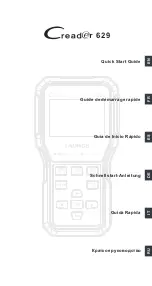
Rev 6.2/2-20
MRT4-DC3: #35068
21
1)
Stay clear of any suspended load while
indicators warn of low vacuum.
Keep everyone away from a
suspended load until it can be safely
lowered to a stable support.
2) Stop using the lifter until the cause of the vacuum loss can be identified: Conduct the
and perform the “Vacuum Test” on page 30.
3) Correct any faults before resuming normal operation of the lifter.
Controlling the Lifter and Load
1A
When the lifter is ready, use the hoisting
equipment to raise the lifter and load as
needed.
Use a control handle (circled in fig. 1A) to keep
the lifter and load in the required position.
Once there is enough clearance, you may
move the load as required.
In Case of a Power Failure
In the event of a battery failure or electrical system failure, the notification buzzer will sound
continuously.
Although the vacuum reserve tanks are designed to support the load for at least 5 minutes
without power, this depends on many factors, including the “L
and the condition of vacuum pads (see “V
Stay clear of any suspended
load during power failure.
If a power failure occurs, keep everyone away from a
suspended load until it can be lowered safely to a stable
support. Correct any faults before resuming normal
operation of the lifter.
OPERATION
Summary of Contents for MRT410LDC3
Page 2: ...MRT4 DC3 35068 Rev 6 2 2 20 2 ...
Page 6: ...MRT4 DC3 35068 Rev 6 2 2 20 4 SPECIFICATIONS Note A standard MRT411LDC3 is shown ...
Page 11: ...Rev 6 2 2 20 MRT4 DC3 35068 9 TO CHANGE THE PAD FRAME CONFIGURATION ASSEMBLY ...
Page 44: ...MRT4 DC3 35068 Rev 6 2 2 20 42 ...
Page 45: ...Rev 6 2 2 20 MRT4 DC3 35068 43 ...
Page 46: ......
Page 47: ......
Page 48: ......
Page 49: ......
Page 50: ......
















































